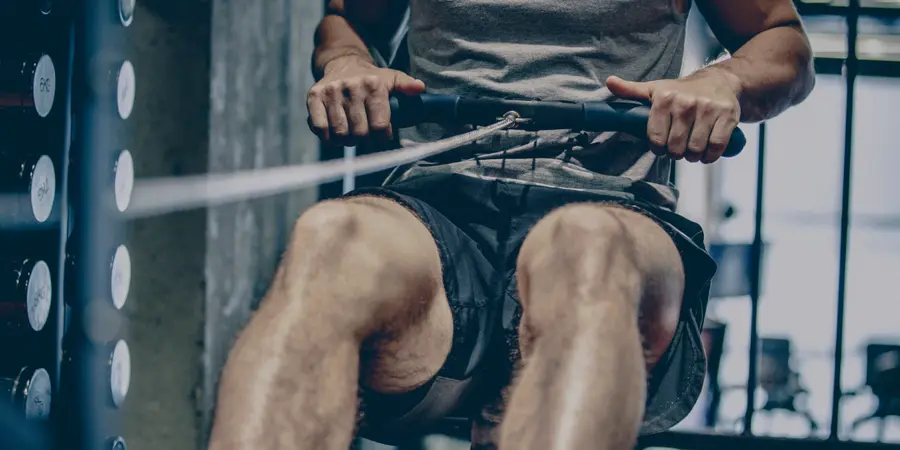Are you looking to build muscle and strength? Pull day workouts are an essential part of any workout routine, especially for men. Pull day workouts target your back, biceps, and rear delts, helping you achieve a balanced and toned physique.
In this blog post, we’ll introduce you to the pull-push-legs split and focus on what a pull day workout is all about.
So if you’re ready to take your fitness game to the next level, read on!
What Is a Pull Day Workout?
Maintaining an active lifestyle is important for overall health and fitness, but what exactly is a pull day workout? This type of strength training focuses on exercises that target the pulling muscles of the body, such as rows, pull-ups, and curls.
Typically part of a larger training program called the pull-push-legs split, the goal of a pull day workout is to build strength and muscle mass in the back, biceps, and other pulling muscles.
Additionally, incorporating a well-designed pull day workout can improve posture, reduce the risk of injury, and enhance overall athletic performance.
Benefits of a Pull Day Workout
A pull day workout primarily focuses on exercises that involve pulling movements, such as those that target the back, biceps, and forearms. Here are some benefits of incorporating a pull day workout into your fitness routine:
- Improved posture: By strengthening the muscles of your upper back, pull day workouts can help improve your posture and reduce the risk of developing rounded shoulders or a hunched back.
- Balanced muscle development: Pairing a pull day workout with a push day workout (which focuses on pushing movements like chest presses and overhead presses) can help ensure that your muscles are well-balanced and reduce the risk of developing muscular imbalances.
- Increased upper body strength: Pull day workouts can help you build strength in your back, biceps, and forearms, which can translate to improved performance in other exercises and daily activities.
- Injury prevention: Strengthening the muscles of your upper back and improving your posture can help reduce the risk of injury to your shoulders and neck.
- Variety in your workout routine: Incorporating pull day workouts into your fitness routine can help you add variety to your workouts, which can help keep you motivated and engaged in your fitness journey.
What Muscles Does a Pull Day Workout Target?
A pull day workout typically targets the muscles of the back, biceps, and forearms. Here are some of the specific muscles worked during a pull day workout:

- Latissimus dorsi: This is the largest muscle of the back and is responsible for pulling the arms down and back towards the body.
- Rhomboids: These muscles are located between the shoulder blades and help to retract the scapulae (shoulder blades) towards the spine.
- Trapezius: This is a large, triangular muscle that covers the upper back and shoulders. It helps to elevate and depress the shoulders, as well as retract and rotate the scapulae.
- Biceps brachii: These are the muscles located on the front of the upper arms, which are responsible for flexing the elbow and supinating the forearm.
- Forearms: Various muscles in the forearms are worked during pull day exercises, especially during exercises that involve gripping and pulling, such as pull-ups and rows.
Overall, a pull day workout targets the muscles of the back, biceps, and forearms, helping to improve upper body strength and posture.
How Is a Pull Day Different From a Push Day?
A pull day and a push day are terms commonly used in weightlifting or bodybuilding to refer to different types of workouts that focus on different muscle groups.
A pull day is a workout that primarily focuses on exercises that involve pulling movements, such as pulling a weight towards your body or lifting your body weight towards a fixed object. Examples of exercises that are typically done on a pull day include pull-ups, rows, and bicep curls.
On the other hand, a push day is a workout that primarily focuses on exercises that involve pushing movements, such as pushing a weight away from your body or pressing a weight above your head. Examples of exercises that are typically done on a push day include bench press, shoulder press, and tricep extensions.
The main difference between a pull day and a push day is the muscle groups that are targeted. A pull day typically targets the back, biceps, and rear delts, while a push day typically targets the chest, shoulders, and triceps.
It’s important to note that these terms are not set in stone and different people may use them in slightly different ways. Additionally, many workout routines include both push and pull exercises to ensure a balanced and comprehensive workout program.
The Best Exercises for Each Muscle Group on Pull Day
On pull day, you’ll want to focus on exercises that target your back, biceps, and rear deltoids. Here are some of the best exercises for each muscle group:

1. Back:
- Pull-ups: This compound exercise targets your lats, traps, and rhomboids.
- Bent-over barbell rows: This exercise targets your lats, traps, rhomboids, and rear delts.
- T-bar rows: This exercise targets your lats, traps, and rhomboids.
2. Biceps:
- Barbell curls: This exercise targets your biceps and forearms.
- Hammer curls: This exercise targets your biceps and brachialis.
- Concentration curls: This exercise targets your biceps and helps to isolate them.
3. Rear deltoids:
- Face pulls: This exercise targets your rear deltoids, rhomboids, and traps.
- Reverse flyes: This exercise targets your rear deltoids and helps to improve posture.
- Rear deltoid raises: This exercise targets your rear deltoids and helps to improve shoulder stability.
Remember to start with a warm-up before beginning any workout and to vary your routine to prevent plateauing. Also, make sure to use proper form and technique to avoid injury.
Tips for Getting the Most Out of Your Pull Day Workouts
Pull day workouts focus on exercises that target the muscles involved in pulling movements, such as the back, biceps, and rear delts. Here are some tips for getting the most out of your pull day workouts:
- Warm up properly: A proper warm-up is crucial to prepare your muscles and joints for the workout. Start with some light cardio and dynamic stretching exercises to increase blood flow and flexibility.
- Focus on compound exercises: Compound exercises such as pull-ups, rows, and deadlifts work multiple muscle groups and are more effective at building strength and muscle mass.
- Vary your grip: Experiment with different grip positions such as overhand, underhand, and neutral grips to target different muscle groups and prevent overuse injuries.
- Use proper form: Correct form is essential to prevent injuries and target the intended muscles effectively. Always use a full range of motion and avoid using momentum to cheat.
- Progressively overload: As you get stronger, gradually increase the weight or reps to continuously challenge your muscles and stimulate growth.
- Incorporate isolation exercises: While compound exercises should form the basis of your workout, incorporating isolation exercises such as bicep curls and rear delt flyes can help target specific muscle groups and improve muscle definition.
- Don’t neglect your core: Your core muscles are essential for stabilizing your body during pulling movements. Incorporate core exercises such as planks and Russian twists into your routine.
- Stretch and cool down: After your workout, take the time to stretch your muscles and cool down properly. This can help prevent muscle soreness and improve flexibility.
Let’s Sum Up
In conclusion, a pull day workout is an essential aspect of the push-pull-legs split routine that focuses on strength and muscle building. It targets various muscle groups such as the back, biceps, and traps, to name a few. Apart from physical benefits, it also helps in improving posture and reducing the risk of injury. While it might seem intimidating at first, with the right exercises and tips, you can get the most out of your pull day workouts.



